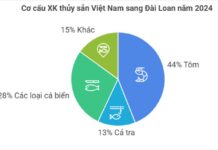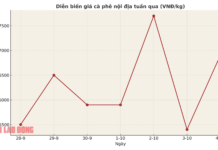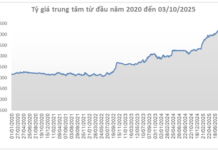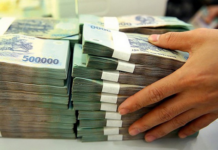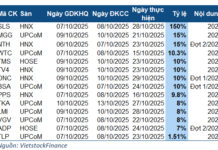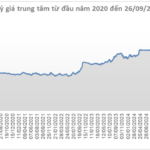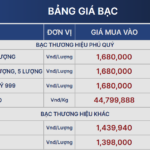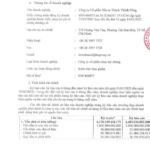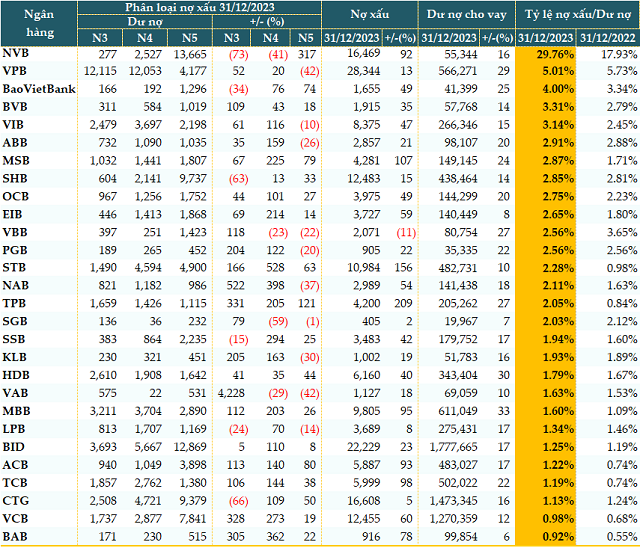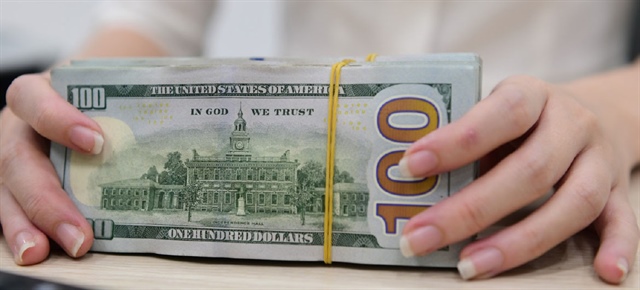
The Federal Reserve’s potential implementation of two additional interest rate cuts by the end of 2025 is expected to provide Vietnam with greater flexibility in managing its multi-objective monetary policy. Photo: LÊ VŨ |
Unpredictable Exchange Rates
The Fed’s decision to cut interest rates on September 17, 2025, is seen as a shift from a cautious to a more accommodative monetary policy stance. Following this trend, the Fed may execute two more 0.25 percentage point cuts in October and December 2025. This scenario is anticipated to enhance Vietnam’s ability to manage its monetary policy, balancing exchange rate stability, inflation control, and maintaining low lending rates to boost economic growth in 2025 and beyond.
In a report by VNDirect, the pressure on the exchange rate is projected to ease in Q4 2025 due to a weaker U.S. dollar (DXY index), continued Fed rate cuts, and increased foreign currency supply. For foreign indirect investment (FII), if the Fed maintains its rate-cutting trajectory, capital flows to emerging markets are expected to strengthen, positively impacting Vietnam’s FII inflows in the medium term. Regarding foreign direct investment (FDI), global credit easing and lower U.S. interest rates will facilitate FDI inflows, particularly as Vietnam emerges as an attractive investment destination for multinationals diversifying their supply chains.
|
If exports remain weak by year-end, exchange rate tensions could persist despite Fed rate cuts. |
However, MBS Securities offers a more cautious outlook. In its September 2025 Macroeconomic Report, MBS analysts noted that despite the DXY index decline in August 2025, the exchange rate rose due to increased domestic foreign currency demand, especially as businesses imported raw materials for year-end production. Additionally, dollar hoarding amid the State Bank’s accommodative monetary policy contributed to the exchange rate’s upward trend.
According to MBS experts, while the U.S. dollar is expected to weaken as the Fed begins its rate-cutting cycle, internal pressures will drive the exchange rate higher. These include: (1) the persistent interest rate differential between the U.S. dollar and the Vietnamese đồng, even with a 0.5 percentage point Fed cut in Q4 2025; (2) higher import demand due to 0% tariffs on U.S. goods, coupled with slower export growth, narrowing the trade surplus; (3) delayed FDI inflows pending clearer tariff information; and (4) the domestic-global gold price gap amid rising gold prices.
Echoing this caution, Assoc. Prof. Dr. Nguyễn Hữu Huân of the University of Economics Ho Chi Minh City highlights two key factors influencing the exchange rate until year-end: the Fed’s monetary policy and the trade balance. “From September 1 to 15, Vietnam exported $19.2 billion and imported $19.85 billion, resulting in a $640 million trade deficit. If exports remain weak, exchange rate tensions could persist despite Fed rate cuts,” he predicts.
Decoding the Paradox
Typically, a trade surplus brings foreign currency into the country, easing exchange rate management. However, Vietnam has yet to fully leverage this advantage.
Assoc. Prof. Dr. Nguyễn Hữu Huân explains that while Vietnam has high export volumes, its underdeveloped supply chains necessitate significant imports. Most businesses engage in low-value-added assembly, limiting the actual U.S. dollar retention in Vietnam despite substantial exports to the U.S.
Furthermore, FDI enterprises often import raw materials, components, and machinery from parent companies at higher prices, causing export-earned foreign currency to flow back overseas through imports.
A 2025 Ministry of Finance report revealed that over 50% of nearly 29,000 FDI enterprises reporting full financial statements in 2023 declared losses, up 21.2% from the previous year. Their after-tax profits fell by 16%, while total assets grew by 6.8%. These figures raise concerns about transfer pricing. Alongside addressing loopholes, Vietnam must implement fundamental solutions to tackle existing inefficiencies.
“Weak supply chains make businesses vulnerable to shifts in exchange rates, monetary policies, and global trade. Vietnam must maximize domestic raw materials and production capacity to establish complete supply chains for exports. This requires a localization roadmap and FDI enterprise collaboration to increase local content. FDI firms should support domestic SMEs in developing supporting industries, deepening global value chain integration beyond exploiting cheap labor and investment incentives,” Assoc. Prof. Dr. Nguyễn Hữu Huân suggests.
He also advises Vietnam to reevaluate its export strategy based on low-cost goods, which heightens exchange rate sensitivity and encourages a weak currency—an unsustainable long-term approach.
Khánh Nguyên
– 07:00 06/10/2025
Silver Prices Skyrocket: A Dramatic Surge in Value
Silver prices have surged both domestically and globally, reaching unprecedented highs and setting new record levels.



